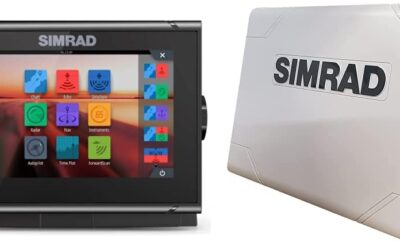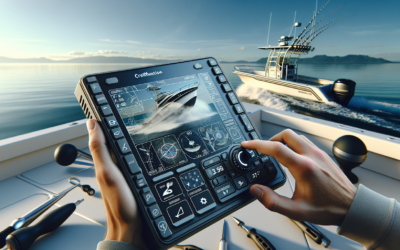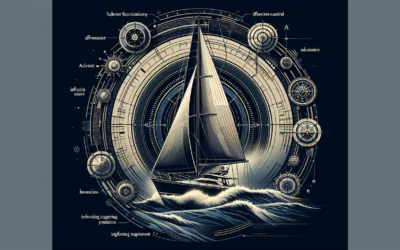If you’re a freshwater angler looking to improve your success on the water, then you’ve come to the right place. In this article, we will provide you with valuable fish finder tips that will help you make the most out of your fishing trips. With these tips, you’ll be able to maximize your chances of finding and catching more fish, whether you’re a beginner or an experienced angler. So grab your fishing gear and get ready to take your fishing game to the next level.
Choosing the Right Fish Finder
When it comes to choosing the right fish finder, there are a few key factors to consider. First and foremost, you’ll want to think about the frequency of the fish finder. The frequency you choose will depend on the type of fishing you’ll be doing and the depth at which you’ll be fishing. Higher frequencies, such as 200kHz, are ideal for shallow water fishing, while lower frequencies, like 50kHz, are better suited for deeper water.
Next, you’ll want to think about the display type that is most suitable for your needs. There are a few options to choose from, including color displays, grayscale displays, and even GPS-enabled displays. Color displays offer a more vibrant and detailed view of the underwater environment, making it easier to spot fish and other structures. Grayscale displays, on the other hand, are more affordable and still provide a clear image of what’s happening beneath the surface.
Another important consideration is the power output of the fish finder. Power output determines the strength and range of the sonar signal. If you primarily fish in shallow bodies of water, a lower power output may suffice. However, if you fish in deeper lakes or rivers, you’ll want a fish finder with a higher power output to ensure that you get accurate readings at greater depths.
Lastly, look for fish finders with built-in GPS and mapping capabilities. Having GPS on your fish finder allows you to mark waypoints and easily navigate to specific locations. Mapping features are also beneficial as they provide a visual representation of the underwater terrain, making it easier to locate fish-holding structures.
Understanding Sonar Technology
Before you can effectively use a fish finder, it’s important to have a basic understanding of sonar technology. Sonar stands for Sound Navigation and Ranging, and it uses sound waves to detect objects underwater. There are two main types of sonar used in fish finders: CHIRP and traditional sonar.
CHIRP sonar, or Compressed High-Intensity Radar Pulse, is a newer and more advanced version of traditional sonar. It emits a continuous sweep of frequencies, which provides a more detailed and accurate view of the underwater environment. Traditional sonar, on the other hand, only emits a single frequency.
When interpreting sonar readings, it’s important to know how to differentiate between various signals. Fish will appear on the sonar display as distinct arches or lines, while other objects like vegetation or structure will appear as clusters or dense blobs. It may take some practice to become proficient at interpreting sonar readings, but with time and experience, you’ll be able to identify fish and other underwater features with ease.
Another important factor to consider is the sensitivity settings on your fish finder. Sensitivity controls the level at which the fish finder detects and displays signals. Adjusting the sensitivity can help you eliminate noise or interference from the display, ensuring that you get accurate readings. It’s important to find the right balance of sensitivity so that you can see the fish and structures without overwhelming the screen with clutter.
Optimizing Fish Finder Settings
Once you have a basic understanding of sonar technology, it’s time to optimize the settings on your fish finder for the best performance. One of the first settings you’ll want to adjust is the depth range. By adjusting the depth range, you can focus on the specific depth at which you’ll be fishing. This allows you to eliminate unnecessary clutter from the display and better target your desired fishing zone.
Experimenting with the sensitivity settings is also essential for optimizing your fish finder. Start by adjusting the sensitivity to a level where you can clearly see the fish and structures without any interference or noise. As you become more comfortable using the fish finder, you can gradually increase the sensitivity to detect more subtle details and targets. Just be mindful not to increase it too much, as excessive sensitivity can result in false readings or cluttered displays.
Many fish finders also come with a fish ID feature, which uses algorithms to determine whether a sonar return is a fish or not. While this feature can be helpful, it’s important to fine-tune it to your specific fishing conditions. Adjusting the sensitivity and threshold settings of the fish ID feature can help you differentiate between actual fish and false alarms caused by debris or vegetation.
Using the Fish Finder on the Water
With your fish finder optimized and ready to go, it’s time to put it to use on the water. One of the primary benefits of a fish finder is its ability to locate fish-holding structures. Whether it’s submerged rocks, fallen trees, or underwater vegetation, these structures attract and hold fish. By using your fish finder to identify these structures, you can focus your fishing efforts in the most productive areas.
In addition to locating structures, your fish finder can also help you identify fish behavior. By observing how fish move and behave on the display, you can gather valuable insights into their feeding patterns and activity levels. This information can be used to adapt your fishing techniques and increase your chances of catching fish.
Many fish finders also come with a split-screen feature, which allows you to view multiple screens at once. This can be particularly useful when you’re trying to analyze different aspects of the underwater environment. For example, you can have one screen showing the sonar display, another showing the GPS map, and a third displaying other important data such as water temperature or depth.
Casting and Presenting Your Lures
Using the fish finder to identify potential hotspots is a valuable technique that can greatly improve your fishing success. As you locate fish-holding structures on your fish finder, take note of the depth at which the fish are holding. This will allow you to match the depth of your lure to the depth at which the fish are located, increasing your chances of enticing a strike.
In addition to depth, your fish finder can also provide valuable information about the behavior of the fish you’re targeting. By paying attention to how fish are moving and behaving on the display, you can adjust your lure action accordingly. If the fish appear to be aggressive and actively feeding, a faster and more erratic lure action may be more effective. On the other hand, if the fish seem to be more sluggish or passive, a slower and more subtle presentation may be necessary.
Utilizing GPS and Mapping Features
Many modern fish finders come equipped with GPS and mapping features, which can greatly enhance your fishing experience. One of the most useful functions of GPS is the ability to mark waypoints. Whether it’s a productive fishing spot or a potential hotspot you’d like to explore further, marking waypoints allows you to easily return to these locations in the future.
In addition to marking waypoints, some fish finders also allow you to create your own fishing maps. This can be particularly useful when fishing unfamiliar bodies of water. By creating your own maps, you can quickly and easily identify underwater structures, depth contours, and other important features that can help you locate fish.
GPS and mapping features also make navigating unfamiliar bodies of water much easier. With accurate GPS positioning and detailed maps, you can confidently navigate through channels, navigate through channels, shallow waters, and pinpoint specific locations without getting lost.
Taking Advantage of Networking Capabilities
Networking capabilities in fish finders allow you to share sonar data with other anglers, creating a valuable network of waypoints and information. By sharing sonar data, you can gain insights into fishing patterns and trends, and collaborate with other anglers to maximize your success on the water.
Creating a network of waypoints is another advantage of networking capabilities. By sharing and exchanging waypoints with other anglers, you can expand your knowledge of productive fishing spots and discover new areas to explore. This can be particularly useful when fishing in unfamiliar waters or when targeting specific species.
Wireless technology has revolutionized the fishing industry, and many fish finders now offer wireless connectivity. This allows you to connect your fish finder to your smartphone or tablet, providing you with additional features and functionality. For example, you can receive notifications, access weather updates, or even control your fish finder remotely from your mobile device.
Maintaining and Caring for Your Fish Finder
To ensure your fish finder continues to perform at its best, it’s important to properly maintain and care for it. One of the most important maintenance tasks is keeping the transducer clean. The transducer is responsible for emitting and receiving sonar signals, so any dirt or debris on the surface can compromise its performance. Regularly wipe down the transducer with a soft cloth and check for any signs of damage or wear.
When you’re not using your fish finder, it’s important to store it properly to prevent any damage. Ideally, the fish finder should be stored in a case or bag to protect it from dust, scratches, and other potential hazards. Additionally, avoid exposing your fish finder to extreme temperatures or prolonged sunlight, as this can damage the internal components.
Lastly, it’s recommended to periodically update the software and firmware of your fish finder. Manufacturers often release updates that address bugs, improve performance, and introduce new features. By keeping your fish finder up to date, you can ensure that you’re taking full advantage of its capabilities and staying ahead of any potential issues.
Interpreting and Analyzing Fish Finder Data
Once you’ve spent some time using your fish finder on the water, you’ll likely have accumulated a wealth of sonar data. Understanding how to interpret and analyze this data is crucial for improving your fishing techniques and locating productive fishing areas.
One of the most common fish finder readings you’ll encounter is fish arches. These arches indicate the presence of fish in the water column. By analyzing the size, shape, and position of the arches, you can gain insights into the size and behavior of the fish. A larger arch may indicate a larger fish, while multiple arches in the same location may suggest a school of fish.
In addition to fish arches, your fish finder also provides data on water temperature and depth. Paying attention to these readings can help you identify patterns and trends that may influence fish behavior. For example, certain species of fish may be more active in specific temperature ranges or may prefer certain depth ranges.
Analyzing the sonar returns can also help you spot fish-holding structures on a map. By identifying areas where fish consistently appear on the sonar display, you can mark these locations as potential hotspots and return to them in the future. Understanding the relationship between sonar readings and underwater structures can greatly improve your fishing success.
Improving Fishing Techniques with Fish Finder
A fish finder is not just a tool for locating fish, but also a valuable resource for improving your fishing techniques. By learning to use your fish finder as a tool, you can adapt your fishing strategies based on the feedback it provides, resulting in increased efficiency and catch rates.
One of the primary benefits of a fish finder is its ability to provide real-time feedback on fish behavior. By observing how fish are reacting to your lures or bait, you can quickly adjust your presentation to increase your chances of getting a bite. For example, if the fish are showing a lot of interest but not striking, you may need to change your lure color or size.
In addition to lure presentation, a fish finder can also help you determine the ideal retrieval speed. By carefully monitoring how fish are reacting to your lure, you can adjust your retrieval speed to mimic the natural movement of prey. Sometimes a slow, steady retrieve is more effective, while other times a quick, erratic retrieve may entice more strikes.
Lastly, a fish finder can help you determine the best fishing locations based on sonar readings. By identifying areas with a high concentration of fish or fish-holding structures, you can focus your efforts in the most productive areas. This targeted approach can save you time and increase your chances of success.
By following these tips and utilizing the features of your fish finder, you can maximize your success on the water and enjoy a more productive and enjoyable fishing experience. Remember to experiment with different settings, pay attention to sonar readings, and adapt your fishing strategies based on the feedback provided by your fish finder. With practice, you’ll become a more skilled angler and increase your catch rates.









